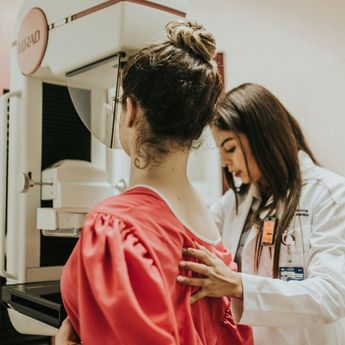Breast cancer can happen to anyone and the symptoms, which may come on quickly or gradually, can vary depending on the type of breast cancer it is. A lump is one of the most discussed symptoms of breast cancer and is usually discovered during a self-exam, by accident (for example, in the shower), or a physical exam. However, a lump, and the other well-known signs of breast cancer, are not always the first thing you may notice. You may not even realize what you’re looking at could be a symptom of breast cancer. Some rarer types of breast cancer can present in ways that mimic other issues, which can cause people to delay seeking further examination or diagnostic screening. It’s important to be aware of the other ways in which breast cancer can display symptoms in order to prevent a delayed diagnosis. Below we discuss three types of breast cancers that present with less common symptoms.
Paget’s Disease of the Breast
A red, scaly, itchy, flaky nipple may be a sign of Paget’s disease of the breast, a rare form of breast cancer where the cancer cells are not in the breast itself but in the skin of the breast. This symptom can easily be misdiagnosed as eczema. Sometimes other symptoms can present as well, such as discharge from the nipple or an inverted or flat nipple. People who develop Paget’s often develop ductal carcinoma in situ (DCIS) as well, making a timely diagnosis of this type of breast cancer even more important.
Inflammatory Breast Cancer
Inflammatory breast cancer is a rare, aggressive type which causes a dramatic colour change in the breast, usually presenting as very red or purplish. The breast can also swell, feel hard, warm and tender to the touch, and the nipple may change shape. These symptoms are very similar to an infection in the breast tissue called mastitis, which is a common infection in women who are breastfeeding. Doctors may prescribe a course of antibiotics to treat mastitis, but this could delay the diagnosis of inflammatory breast cancer. As a result, it is often diagnosed at a more advanced stage.
Phyllodes Tumours
Phyllodes tumours, or Cystosarcoma Phyllodes, are breast tumours that can grow rapidly within a few weeks, up to 3cm or larger. These tumours form not in the milk ducts or glands of the breast, but the connective tissue that holds it all together. You may notice a stretching or translucence of the skin over a bump that feels tender. In people with darker skin tones, the stretched skin may have a shiny look. Phyllodes tumours can be benign (called a fibroadenoma) or cancerous, and it is difficult to tell the difference using imaging or via a physical exam as they appear similar. A biopsy is the only way to tell for sure. While rare, the fast growth rate of these tumours makes metastasizing a concern.
Your Next Steps
While finding a lump in the breast is the most obvious indication that you should seek a doctor’s opinion, other signs that something may not be right shouldn’t be dismissed or rationalized. In addition to the above less common symptoms, things like changes to skin texture, dimpling of the breast, and swollen lymph nodes in the armpit or collarbone area could also indicate the presence of breast cancer. Even if you’re unsure, consulting a healthcare provider can bring peace of mind or, in the case your symptoms are breast cancer, a more timely diagnosis and likely a better outcome.







